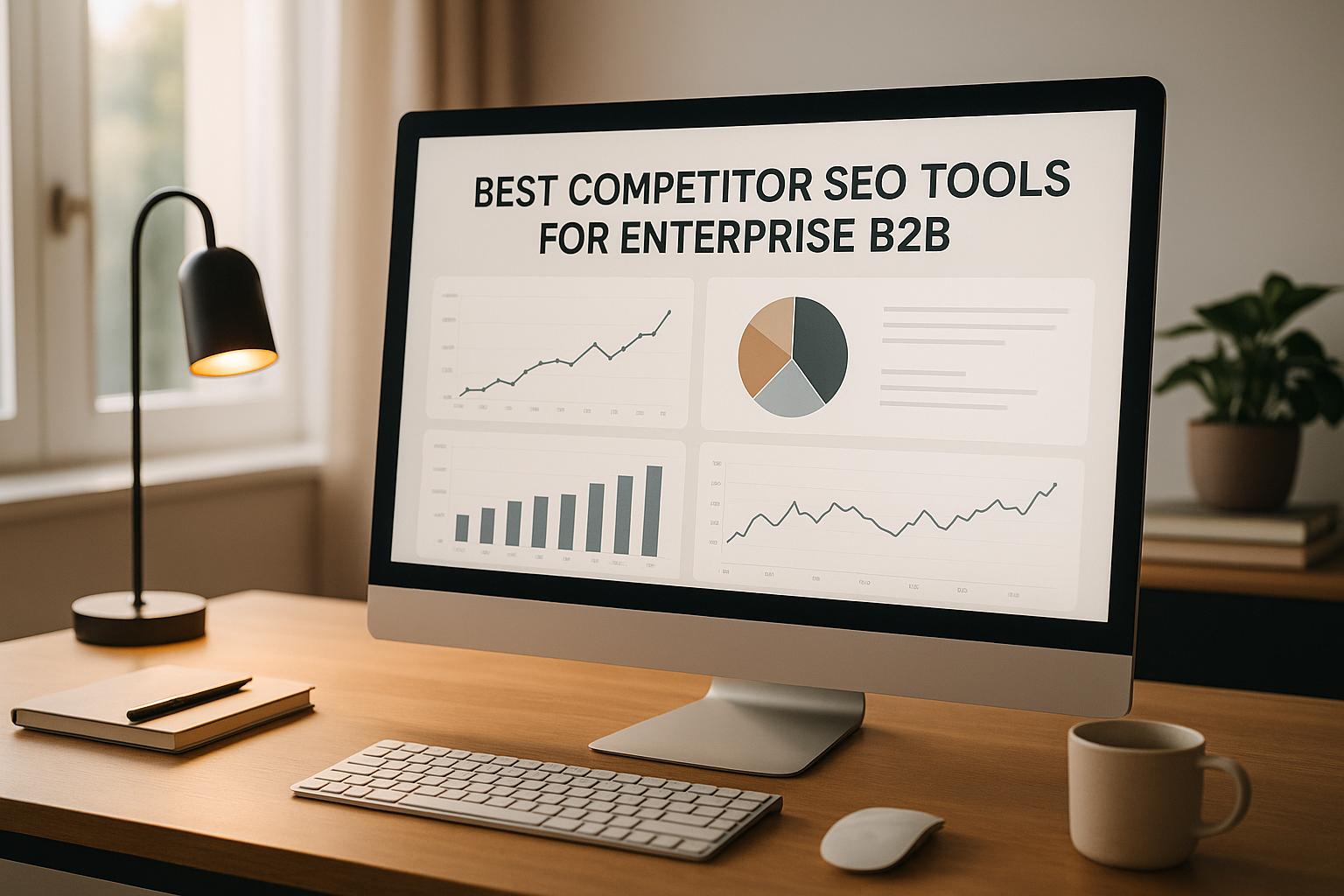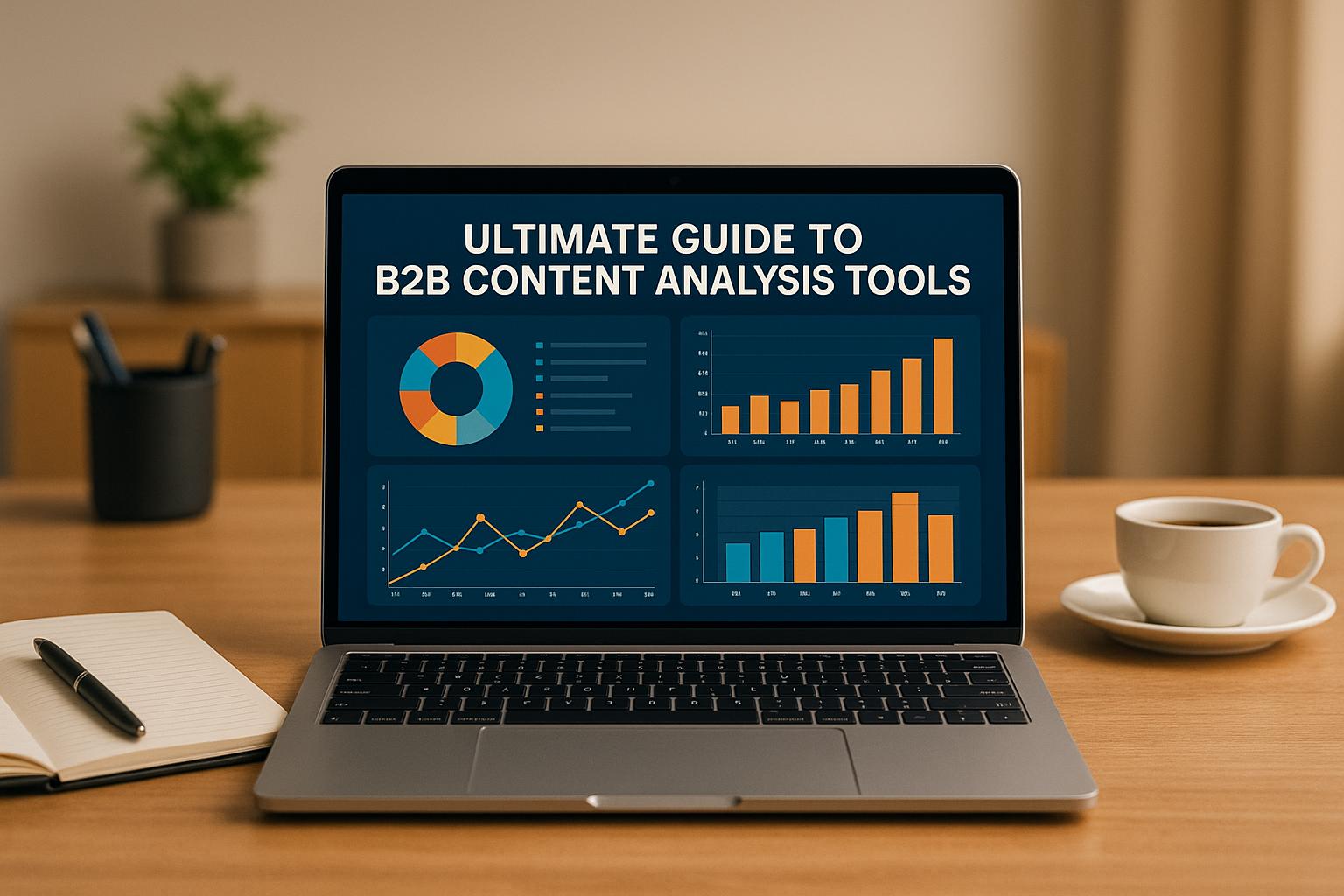Want better SEO rankings? Focus on Core Web Vitals. These three metrics - Largest Contentful Paint (LCP), First Input Delay (FID), and Cumulative Layout Shift (CLS) - are now part of Google's ranking algorithm. They measure how fast your site loads, how quickly it responds to user actions, and how stable the layout is while loading. Strong scores mean better rankings, lower bounce rates, and happier users.
Key Takeaways:
- LCP (Loading Speed): Aim for under 2.5 seconds for visible content.
- FID (Interactivity): Keep response time under 100 milliseconds.
- CLS (Visual Stability): Maintain layout shifts below 0.1.
How to improve?
- Use tools like PageSpeed Insights, Google Search Console, and Lighthouse to track and fix issues.
- Optimize images, streamline JavaScript, and reserve space for dynamic content.
Improving these metrics not only boosts rankings but also enhances user experience. Let’s dive into the details.
Core Web Vitals Explained: How To Fix Site Optimization Issues
Core Web Vitals Explained
The three key metrics - LCP, FID, and CLS - each have specific performance goals. These metrics play a big role in improving site performance and boosting search rankings. Let’s break them down.
LCP: Loading Speed
Largest Contentful Paint (LCP) measures how fast the main content of a webpage becomes visible. The goal is to achieve an LCP score of under 2.5 seconds. This metric focuses on the time it takes for the largest visible element to load, such as:
- Hero images
- Text blocks
- Video thumbnails
- Background images
Factors affecting LCP include server response time, render-blocking JavaScript and CSS, resource loading speeds, and client-side rendering.
FID: Page Response Time
First Input Delay (FID) tracks how quickly a page responds when users interact with it. The target FID score is under 100 milliseconds. It measures delays in actions like:
- Clicking buttons
- Selecting menu items
- Following links
- Typing in form fields
Slow response times are often caused by heavy scripts, third-party code, or overly complex event handlers.
CLS: Layout Stability
Cumulative Layout Shift (CLS) measures how visually stable a page is by tracking unexpected layout shifts. A good CLS score is less than 0.1.
| Element Type | Issues | Fixes |
|---|---|---|
| Images | Missing dimensions | Set explicit width/height |
| Ads | Dynamic insertion | Reserve space for ad slots |
| Fonts | Late loading | Use font-display: swap |
| Dynamic Content | Injected elements | Pre-allocate space |
Unexpected layout shifts can interrupt user interactions and create a frustrating experience.
Hitting these performance targets improves both user experience and search engine visibility. Next, we’ll explore how these metrics directly impact search rankings.
Core Web Vitals in Search Rankings
Direct Ranking Effects
Core Web Vitals now play a role in Google's search algorithm, alongside factors like content quality, backlinks, and mobile-friendliness. When competing pages have similar content quality, higher Core Web Vitals scores can give your page an edge.
User Behavior Effects
These metrics don't just impact rankings - they also shape how users interact with your site. Pages that load quickly and remain stable keep visitors engaged, lowering bounce rates and increasing the time spent on your site. This improved user experience can indirectly boost your rankings. To get the best results, aim for strong Core Web Vitals scores while continuing to deliver relevant, high-quality content.
sbb-itb-5be333f
How to Improve Core Web Vitals
LCP Optimization Steps
To improve Largest Contentful Paint (LCP), focus on speeding up load times. Use a Content Delivery Network (CDN) to deliver assets closer to users. Compress images with modern formats like WebP. Fine-tune server settings and caching to reduce delays. Implement lazy loading for offscreen images to prevent unnecessary resource usage. Once LCP is optimized, shift your attention to improving First Input Delay (FID).
FID Optimization Steps
Enhancing FID involves streamlining JavaScript. Break large JavaScript files into smaller chunks, defer scripts that aren't critical, and remove any unused code. Set up proper browser caching with the right headers to reduce loading time for returning users. After addressing FID, focus on improving Cumulative Layout Shift (CLS) to ensure visual stability.
CLS Optimization Steps
To reduce CLS, work on maintaining consistent visual stability. Here are a few key actions:
- Set fixed dimensions for images and videos, and allocate space for dynamic content like ads.
- Use system fonts or preload custom fonts to prevent layout shifts.
- Avoid adding new content above existing elements unless triggered by user interaction.
Tools for Improvement
Here are some tools that can help with Core Web Vitals optimization:
| Tool Name | Primary Function | Key Benefit |
|---|---|---|
| Ryte | Technical SEO Analysis | Offers a detailed website quality assessment |
| WordLift | AI-Powered Content Structure | Simplifies schema markup with automation |
| Alli AI | Automated SEO Optimization | Provides scalable solutions using AI |
| InLinks | Semantic Analysis | Boosts topical authority and relevance |
Core Web Vitals Tracking
Once you've made improvements, keeping an eye on your Core Web Vitals is essential to ensure your site continues to perform well.
Tools for Tracking
You can monitor Core Web Vitals using tools like PageSpeed Insights, Google Search Console, and Lighthouse:
- PageSpeed Insights: Delivers performance reports for both mobile and desktop versions of your site.
- Google Search Console: Groups URLs by performance, making it easier to identify problem areas.
- Lighthouse: Provides a detailed audit covering performance, accessibility, best practices, and SEO.
These tools help you stay on top of your site's performance and pinpoint areas for improvement.
Ongoing Performance Monitoring
Plan regular audits for your site's key pages and overall structure. This helps you track trends and assess mobile performance after updates. Consistent checks make it easier to spot and fix issues before they affect your users.
Getting Expert Support
Need more advanced help? The Top SEO Marketing Directory can connect you with specialists who are experienced in Core Web Vitals optimization. They can assist with advanced strategies and provide ongoing monitoring to keep your site in top shape.
Conclusion
Core Web Vitals and SEO
Core Web Vitals play a critical role in SEO, directly influencing search rankings. The three metrics - Largest Contentful Paint (LCP), First Input Delay (FID), and Cumulative Layout Shift (CLS) - offer a detailed view of your site's performance. When these metrics are optimized, they not only enhance user experience but also improve your visibility in search results. Understanding and improving these metrics is a key step toward better SEO outcomes.
Next Steps
Here’s how to improve and maintain strong Core Web Vitals:
- Regularly check your site's performance using tools like PageSpeed Insights and Lighthouse.
- Address issues related to loading speed, interactivity, and layout stability.
- Collaborate with SEO professionals for more advanced technical optimizations.
For businesses aiming to refine their Core Web Vitals, the Top SEO Marketing Directory provides access to expert resources and specialized tools. Their curated solutions can help pinpoint problem areas and implement effective fixes.
Consistent monitoring and data-driven updates are essential. By focusing on these technical details, you’ll not only improve user experience but also gain better rankings from search engines.
FAQs
How do Core Web Vitals impact my site's search rankings compared to other factors like content quality and backlinks?
Core Web Vitals play a significant role in your site's search rankings as part of Google's Page Experience update. These metrics - Largest Contentful Paint (LCP), First Input Delay (FID), and Cumulative Layout Shift (CLS) - measure the performance, interactivity, and visual stability of your website. A site that performs well on these metrics provides a better user experience, which Google prioritizes in rankings.
However, Core Web Vitals are just one piece of the SEO puzzle. Factors like high-quality, relevant content and strong backlinks still carry significant weight. To maximize your rankings, aim for a balance: optimize your Core Web Vitals while maintaining excellent content and a robust link-building strategy.
What are the most common mistakes to avoid when improving Core Web Vitals for better SEO rankings?
When optimizing Core Web Vitals, there are a few common mistakes that can hinder your efforts. Avoid these pitfalls to ensure your website performs well:
- Neglecting mobile optimization: Many users access websites on mobile devices, so failing to optimize for mobile responsiveness can negatively impact metrics like Largest Contentful Paint (LCP) and Cumulative Layout Shift (CLS).
- Overloading pages with heavy elements: Large images, unoptimized videos, or excessive third-party scripts can slow down load times and harm your First Input Delay (FID) score.
- Ignoring proper hosting or caching solutions: Poor server performance and lack of caching strategies can lead to slower page speeds and reduced overall performance.
Focus on implementing lightweight design, optimizing server response times, and testing your site regularly to avoid these mistakes and maintain strong SEO rankings.
Can improving Core Web Vitals boost conversion rates, and how does it work?
Yes, improving Core Web Vitals can positively impact conversion rates. These metrics - Largest Contentful Paint (LCP), First Input Delay (FID), and Cumulative Layout Shift (CLS) - measure how quickly your website loads, responds to user interactions, and maintains visual stability. A better user experience often leads to higher engagement, lower bounce rates, and increased trust, all of which can contribute to improved conversions.
For example, a faster-loading site (optimized LCP) ensures users can access content quickly, reducing frustration. Similarly, minimizing layout shifts (improved CLS) prevents accidental clicks, enhancing usability. By addressing these metrics, you create a smoother experience that encourages users to stay longer and take desired actions, like making a purchase or signing up for a service.


